The world is steadily moving into the digital space — experts estimate that more than 5 billion people use the Internet, which is 65% of the world’s population! The growing number of assets requires effective management. Content Management Systems or DAM (Digital Asset Management) cope with this task. The developers of the DAM platform Picvario have reflected on the future of the digital world and highlighted five key features of DAM systems that will significantly improve the quality of work with content.
How DAMs are changing the media for the better.
The number of existing photos can estimate the enormous volume of produced content worldwide. For example, according to a study by Photutorial, in 2022, there will be 54,000 photos taken per second globally, 196 million per hour, and 33 billion per week, for a total of 1.7 trillion photos taken annually!
The DAM systems help orient users in the content, and the platform’s task is to «break down» the endless flow of produced media content. This applies to photos, video, audio, branded layouts — any material with visual and audio information.
The DAM movement began in the 90s with the spread of the Internet. The pioneers of DAM took library cataloging — that is, the creation of catalogues and data cards describing library content — as their foundation. Catalogues are needed to maintain, organize, and navigate library content. This is the main task of DAM.
The principles of content management were originally applied to media: publishing and print media. Nowadays, DAM is also being integrated into educational institutions, sports portals, manufacturing enterprises, marketing agencies and many other organizations and industries.
To summarize — on a DAM platform, it is possible to store, search, organize and distribute media files between unrelated people. These systems’ capabilities save the world’s most valuable and irreplaceable resource: time.
Five features that will change the way we work with content forever.
Still, owners and employees of organizations may have a question: how are DAM systems different from cloud services with a simpler filing system? And what are those special tools that make working with content easier?
1. The heart and soul of DAM — Metadata.
By using a DAM, you can find content instantly. You don’t need to know the exact name of the file — the metadata helps you find it.
It’s easy to understand how metadata works — we deal with it daily. Suppose you have bought medicine and the instructions only have the name of the medicine printed on them. Or you go to the movie theatre, and the poster lists a list of movies «Movie_1», «Movie_2», and «Movie_3» — no specifics. The information provided on the medicine label or theatre poster is metadata.
Now imagine that we are talking about gigabytes, terabytes of content produced. Users can add information about the asset to the metadata to make content easier to navigate. That way, platform users can understand what the media file is produced for, what information it contains, and when and who created it.
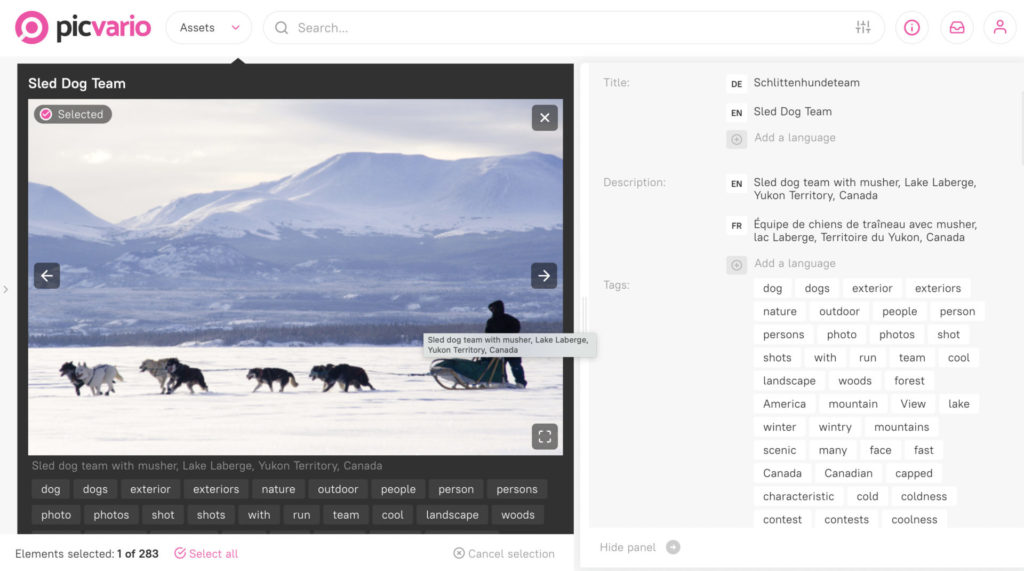
Sometimes the name, date of creation and tags are enough to navigate, but you can add more details, such as copyrights and the terms of access to content. Additionally, the world’s metadata standards EXIF and IPTC/XMP suggest more than 200 properties for each photo, including the photo shoot date, the photographer’s name, and additional information.
For example, EXIF metadata on the platform automatically records the GPS coordinates of the photo. The coordinates are not informative, but the system recognizes this data and can mark the exact location on a map.
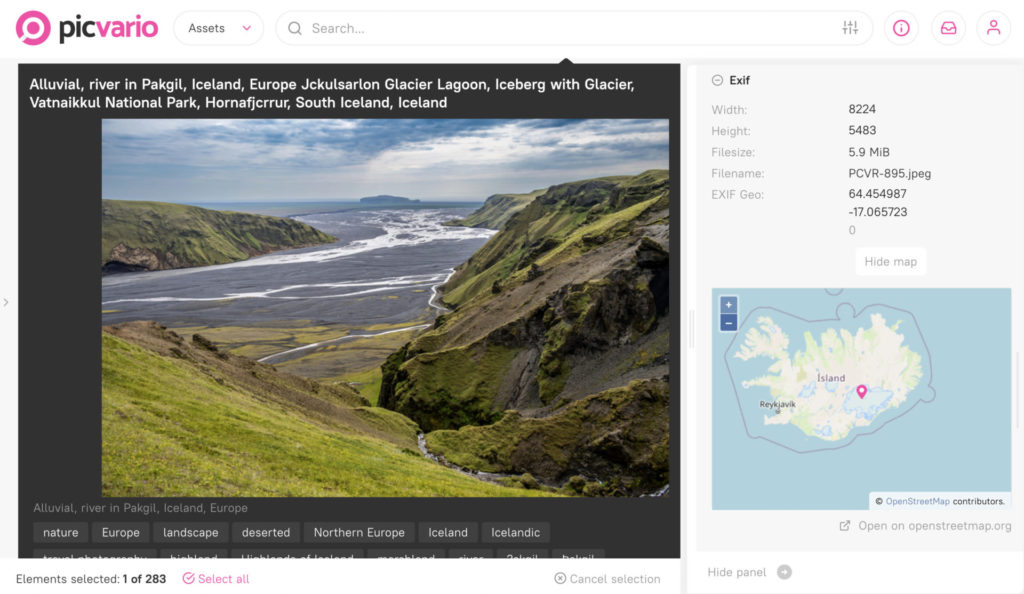
Of note, in advanced DAM systems, users can configure their fields in the admin panel. In short, there is plenty of room to explore metadata fields.
2. Quick preview using proxies.
DAM systems recognize and read basic or specific media file extensions. The system can create proxy versions of different formats — smaller copies of the originals with a lower resolution.
Content is usually haphazardly stored in different folders, and one must search for media files by name and open them randomly. If the original photo size is 5 MB, the original layout is 100 MB, or the video is 200 MB, it may take a long time to find. The features of DAM solve this problem. No matter how many media files are stored on the platform, the system will show you a quick preview of all the content.
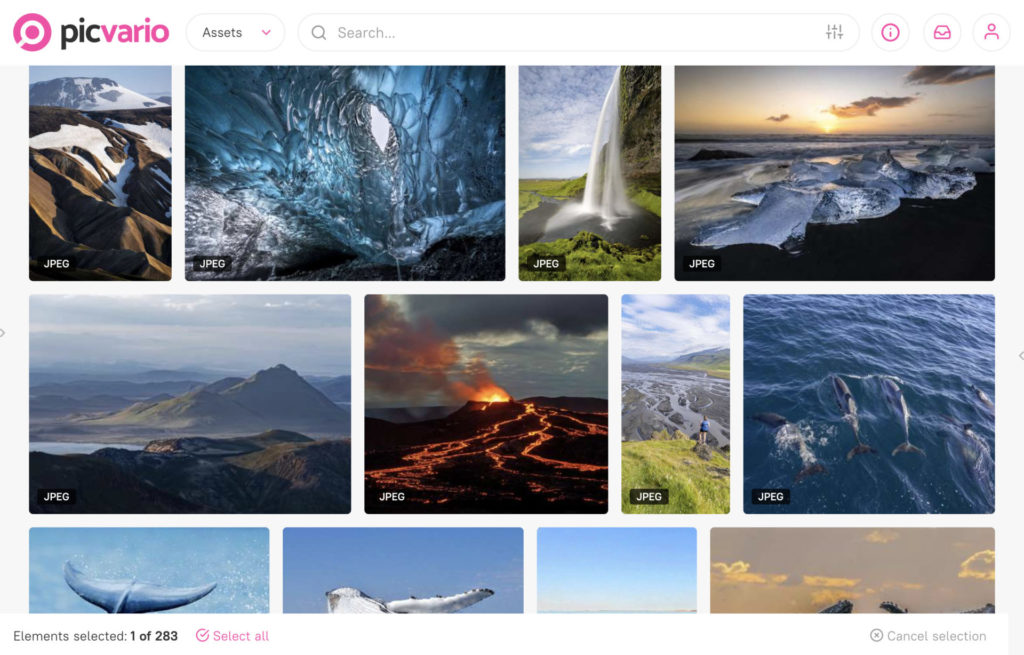
Another example of proxy versions’ usefulness is when a designer sends in a layout, and the team approves it. The working files are needed for printing, a smaller version for the presentations, and a thumbnail version for internal mailings. As a result, the team has to return to the designer to ask for new formats of those files. The DAM platform comes to the rescue — it adapts image sizes for download to the customer’s needs.
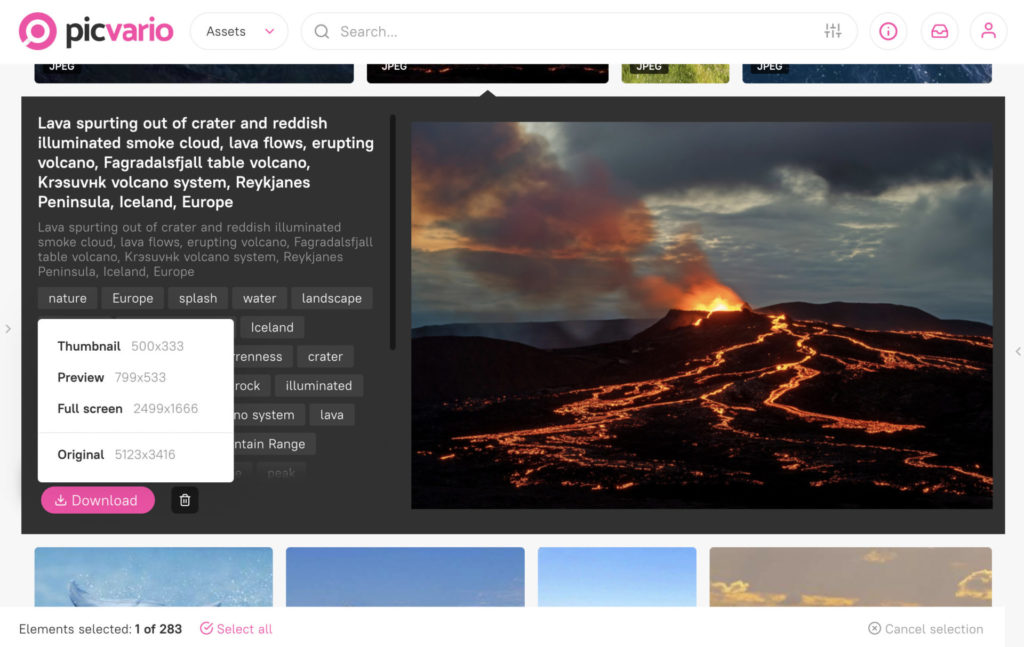
3. Digital materials under complete control.
It is not uncommon for media files to be carelessly stored in shared folders on company servers; often, they are not intended for everyone. In such cases, there is a risk that media files may be altered, accidentally deleted or replaced with earlier versions. At other times, confidential content should be hidden from prying eyes.
DAM systems can secure content by altering permission settings to reduce any risk of data loss. From the moment a file is transferred to the platform, it is possible to specify who can view, edit, delete and download content in the system.
4. Artificial Intelligence: Machines to the rescue.
For those encountering DAM systems for the first time, there is some anxiety at the prospect of manually filling in metadata. Fortunately, we live in a time of advanced technology. Today’s DAM platforms include an auto-tagging feature for objects. This means that as soon as media files are uploaded, the system will automatically assign tags to them. Artificial intelligence recognizes objects (skyscrapers, sidewalks, food) and places of action (outdoors, cityscape).
The user can search for media files with a single click, selecting the appropriate tag. And then DAM-system uploads all the » matched » content with this tag. Convenient, isn’t it?
The Face Detection feature saves time. Putting the feature to work is easy — files are uploaded to the platform, and the system recognizes faces in photos. Then the people in charge of the content enter the names of all the people found by the platform. A nice bonus — the name has to be entered only once, and the system automatically tags that person in all the other photos. This means that in the future, platform users can easily find all the available photos of that person by simply clicking on his or her name.
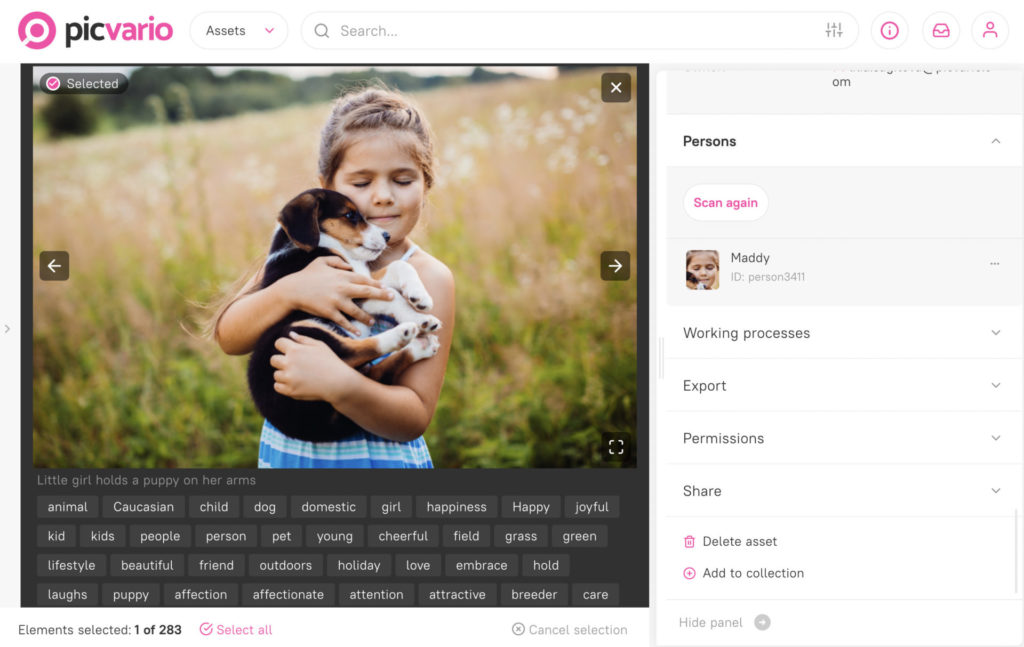
Some DAM systems have another useful tool in their arsenal — autocorrection of images. Neural networks automatically process media files, improving colour rendering and retouching photos. This function is especially urgent for mass media when the world around them is falling apart, and materials need to be released as soon as possible.
5. The customer is always right: technical customization of DAM.
How is it possible to move all of an organization’s cumbersome content into the system? It’s solvable — the platforms integrate with the customer’s IT infrastructure, cloud storage, servers, etc.
Advanced DAM systems can interact with an organization’s existing corporate programs: the company’s website, CRM, and other applications.
DAMs can be deployed in cloud-based systems. For example, DAM platform developer Picvario uses two versions of cloud models. SaaS, where the customer gets pre-configured and ready-to-use software. The other option is PaaS, where the customer can access the platform and its development tools. In this case, the customer can implement his settings while the configuration of the IT infrastructure is taken care of by the platform owner.
Picvario lets you configure the platform on the customer’s servers.
Picvario supports easy access to the system — users can log in via corporate accounts, and authorization is possible on different devices.
Oh, the wondrous and frightening world.
The process of digitalization is accelerating, a telling example — there are about 1.4 million technology start-ups worldwide, and they are among those who stimulate an active transition to digital. Trends and vectors of development in the IT industry are changing instantly, and one of the directions — adapting the content for the needs of people with disabilities. This also applies to DAM platforms.
According to the Blindlook portal, there are 284 million visually impaired people worldwide and 39 million blind people. It turns out that millions of people cannot understand the information available in the browser without a voice description of images. The alt-text field was developed for DAM systems to support inclusivity and help adapt platforms. It contains a brief description of the images read by built-in screen readers. These include VoiceOver on the Mac system and NVDA on Windows. The programs transform text and graphic information on the screen into auditory information.
How will digital tools evolve in the future? According to Sergei Fomin — CEO of Picvario, the breakthrough will be the production of generative content, which is created using artificial intelligence algorithms. A good example from our everyday life is Instagram and TikTok masks, which are getting better and better at adapting to our face shape and facial expressions.
The possibilities of machines are nothing short of awe-inspiring. Machines are composing music, creating art, writing film scripts, and taking over the entire media space. Our imagination can go wild, and artificial intelligence will be able to recreate it. A strawberry frog and teddy bears on the street? Here you go!

However, every story has two sides. In 2018, a video of a speech by former U.S. President Barack Obama was posted on YouTube. In this video, he criticizes then-President Donald Trump. The video was created using the program Fakeapp and a graphic editor. Neural networks could perfectly convey the tilt of Obama’s head and the movement of his lips during the speech. Many users laughed at the video, but there is reason to worry. It is not hard to guess the danger lurking in the ability of neural networks to produce fake content.
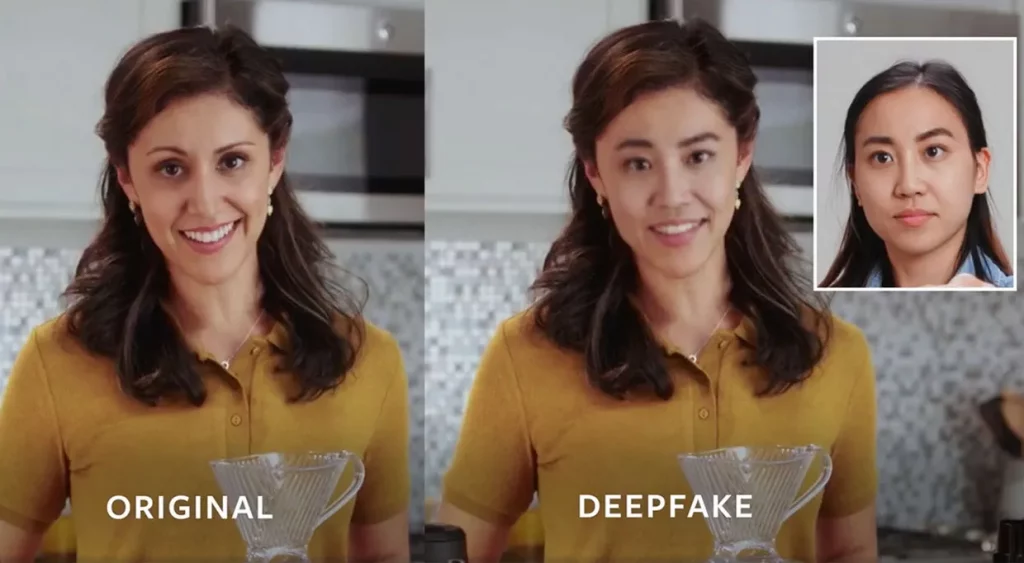
In light of these events, in 2021, the C2PA coalition was created, which included the media giants such as Microsoft, Adobe, BBC, Intel and others. They merged technologies and issued a standard for combating deepfakes to prevent the manipulation of visual content. The C2PA technical specification should ensure the authenticity of digital media by confirming its source and editing history.
«C2PA will allow to distinguish real digital content from artificially created content,» says Sergey Fomin. «The importance of this is now understood in many industries up to government agencies. Recognition of fake or manipulated content is among the top priorities of projects aiming to develop and implement IT solutions.»
Right now, the fight against deepfakes is like throwing a tennis ball back and forth. The creators of counterfeit recognition algorithms improve functions for the detection of deepfakes. In turn, the people who create fake content adapt their technology to new recognition systems.
Still, synthetic content creation technologies do more good than harm. They can be used to create personalized videos and new images for games and movies. In short, the digital future will not plateau, but that is a topic for a separate article.






